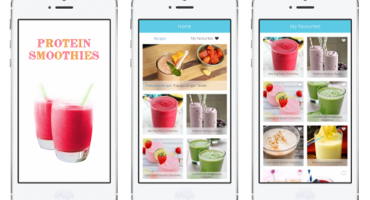Introduction to the World of Mobile Application Testing

Nowadays, mobile phones have evolved from normal communication devices to a gadget that can basically do everything. For example: getting directions, booking tickets (flights, bus, movie, etc), shopping, ordering food, etc. In this article, I will be talking about the testing process of these applications.
Topics that will be discussed are as follows:
- Introduction to Mobile app testing
- Importance of Mobile app testing
- Manual vs Automation testing
- Introduction to Mobile app testing
What is Mobile App testing?
Mobile app testing is the process that every application that is developed for handheld devices, has to go through. This is to assure a certain level of quality before the application is released into the market, also known as the play store (Android devices) or app store (iOS devices).
Now, the mobile development life cycle generally tends to be shorter than those of other applications, such as desktop ones.
Mobile applications can be tested on the basis of the following parameters:
- Functionality
- Usability
- Security
- Importance of Mobile app testing
Today’s technology industry is very competitive and hence it is very important to have and maintain an excellent quality of any mobile application. According to a research, 48% of users are less likely to use an app again if they are troubled with the app’s performance such as software bugs, crashes, freezing issues, slow load, un-intuitive navigation, security issues, privacy breaches, etc. Majority of customers will stop using the application forever, which will in turn result in losing your customer’s loyalty, large amounts of money and many users.
Also, according to a research, 16% of the users may give the app a second or a third try. Even though you will definitely try to fix the issues after the app is released, this will disfigure your company’s reputation. As the saying goes, “A good reputation precedes you, a bad reputation follows you for a long time”, it is always better to test your applications before releasing them in the market.
- Manual vs Automated Mobile App Testing
Manual App testing:
Automated testing can never replace manual testing. For example: if the app crashes, you need to locate it using manual testing. Also, manual testing is required if you want to do usability of user experience scenarios. Lastly, automated testing cannot find errors if it wasn’t programmed to do so.
Pros:
- Handles more complicated use-case scenarios
- App crashes can be identified easily
- Faster and cost-effective for small projects
- Replicated real user experiences
Cons:
- Not 100% accurate
- Requires a skilled person to perform
Automated App testing:
In automated testing, speed and reliability are useful to perform time consuming test cases and regression testing. Most automated tests are reusable, but in an agile environment, automated test scripts have to be reworked. As a mobile app evolves, the product flow changes, as well as the user interface requirements and specific features. As a result, every change calls for an update in the automated test script.
Pros:
- Performs tedious tests
- Runs multiple tests simultaneously
- Cost-efficient for larger mobile apps
So, this brings us to the end of this blog. In short, mobile app testing gives credibility to mobile applications and helps in building customer trust and loyalty to the apps. Testing also improves the user experience.

The Story of My First Acquia Certification

Coding Tips, Duke Experience


